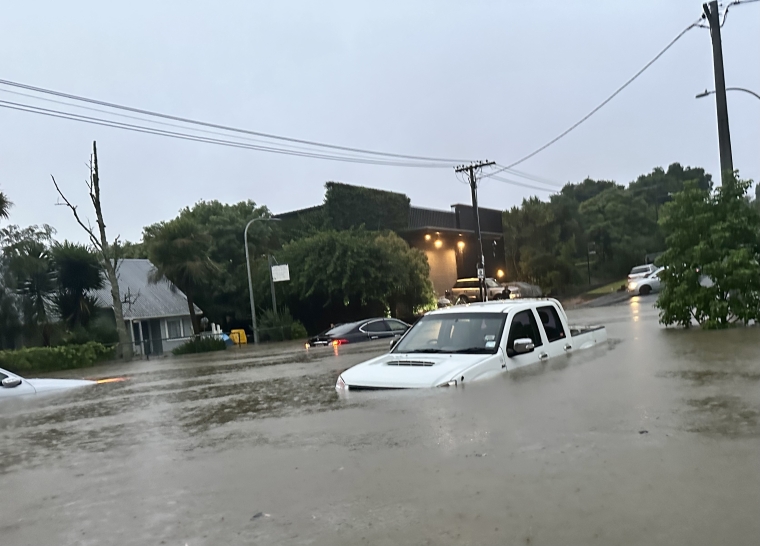
New Zealand's National Emergency Management Agency (NEMA) has published an internal review of its response during the devastating weather event in Auckland, and Cyclone Gabrielle that killed fifteen people at the start of 2023, finding several serious problems in several areas.
On the technology side, NEMA said Microsoft's Teams collaboration app that is used as part of Emergency Management NZ was found wanting, and led to sub-optimal tasking processes.
"The Emergency Management NZ (‘Emi’) Microsoft Teams tool does not support task management. It does not offer the ability to link tasks, set hierarchies of tasks, and match offers with requests/tasks," NEMA wrote in its report.
NEMA also said access to Emi was problematic, due to security settings on their laptops.
Microsoft Teams was also inaccessible for several hours on February 12 due to an IT outage, with staff having no Wi-Fi or access to shared files and emails.
The free Signal messenger app was deemed to work well for both scheduled and ad-hoc updates to the NEMA chief executive and the Minister for Emergency Management, but it was limited to mobile phones at the agency.
NEMA staff said the Signal app needs to be available on desktops and laptops as well, to speed up its use and for filing of messages.
Most functions for the National Coordination Centre at the Beehive, and the National Crisis Management Centre (NCC and NCMC respectively) that had standard operating procedures (SOPs) found their processes wanting and not fit for the scale and pace of the adverse weather events.
The agency also said it needs a shared single-source of truth for its systems. Not having that for NEMA's Common Operating Picture (COP) meant the agency didn't have situational changes that could affect decisions readily and continuously available.
There was a lack of common operating picture information such as deployed staff finding it challenging to access information across multiple locations and Coordinated Incident Management System (CIMS) functions.
Worryingly, NEMA said the NCC/NCMC facility "is not fit for purpose", particularly for large scale-scale events. "NEMA and NCC/NCMC IT was not reliable," the agency said.
The facility used by NEMA currently doesn't have enough space to operate, and meeting rooms. It suffers from poor mobile phone and Wi-Fi reception in some areas, and has poor lighting and ventilation.
NEMA staff also experienced difficulties using their work IT equipment in the regions, as security settings on these limited Internet access via external connections.
Without Internet access, staff couldn't get templates for briefings and handovers. Satellite phones were used for some emergency calls, but NEMA said they're unsuitable even partially for normal mobile phones.
Overall, the internal review presents 19 lessons in areas that must and need to improve, what improved during the event, and what went well during the storms.
"This report provides us with an opportunity for reflection, and for us to reach out to our colleagues across the emergency management system and share what we have identified - include those things that went well and were improvements are needed," NEMA's acting chief executive Jenna Rogers said.
Perhaps most disconcertingly, the agency said in Lesson 10 that "we do not have enough well trained NEMA staff or surge staff to deploy".
NEMA and surge staff that were available to be deployed did a good job, the agency said but "we just did not have enough of them".
11 Comments
I can't understand why there isn't a dedicated radio frequency for use in emergencies here, so people can find out what's going on. In Hawke's bay people were waiting hours for updates from commercial radio stations to find out what was going on.
Works when the power's off and mobile network down
easier to use commercial radio
But not as useful when the info needs to be updated and repeated constantly...no good waiting for the news section on commercial radio on the hour when things are changing by the minute and you don't know that flood waters are rising rapidly...
The speed of the event???.there were warnings of the potential amount of rain coming for days. It actually arrived 6 or so hours later than forecast.
A COP utilising SharePoint & a mapping system accessible via the cloud is required.
NEMA can manage access control using an AD cloud platform. Access is given as new spokes arrive in the disaster area.
Whole thing can be web browser based.
If you got an internet connection, your in business.
Once most systems go down you have starlink and ham radio AREC
Yeah maybe, but if you wireless network shits itself then you got nothing. What are you going to relay on the radio? thoughts and prayers.
Its a basic assumption of emergency management, is that everyone must be prepared to be able to look after themselves for a period of x days (x is getting bigger) I have heard west coasters being told its 14 days after alpine fault goes...
Sure if you are hurt , this is a chance you might get help... but the modelling for the big one is that 20k might die.
NEMA is not scaled to cope with anything as big as its going to have to face...
Anyone basing a response capability around Microsoft Teams as an enabler is F^%ked....
No carrier comms (snapped fibre) , possible starlink if you have... depending on downlink ground station...
Radio (ham and emergency bands) with genset is more likely your option...
What do they mean "the Signal app needs to be available on desktops and laptops as well"?
It is available for linux, mac, windows -> https://signal.org/download/
Do they mean they need someone to install it for them?
Or is the issue that the PC version requires the PC to have a working internet connection? (no different to the mobile version in that regard)
The PCs and laptops will be managed boxes so the end users cant install anything. IT need to work out how to install e.g. Signal safely for the enterprise and who requires it etc so they are hamstrung too for a while.
This should be obvious but end users need to be able to have some control in an emergency situation, but that goes against best practise. This means end users cant adapt to a big problem themselves because every change is bottlenecked by IT services. Add in the complication of unavailable networks and the inflexibility of the tools which are designed for stable office environments and no surprise it all breaks down.
Best practise is now just use Microsoft cloud services. Then add a few other expensive big names like Salesforce. It is very hard to present other options to executives who are so sure that is the low risk way forward.
On a slightly related topic, how about some very, very strong repercussions for those who turn into sociopaths during such an event, like the a-holes who stole generators from cell towers after the cyclone, thereby massively hampering comms?
https://www.nzherald.co.nz/nz/cyclone-gabrielle-thieves-take-generators…

We welcome your comments below. If you are not already registered, please register to comment
Remember we welcome robust, respectful and insightful debate. We don't welcome abusive or defamatory comments and will de-register those repeatedly making such comments. Our current comment policy is here.